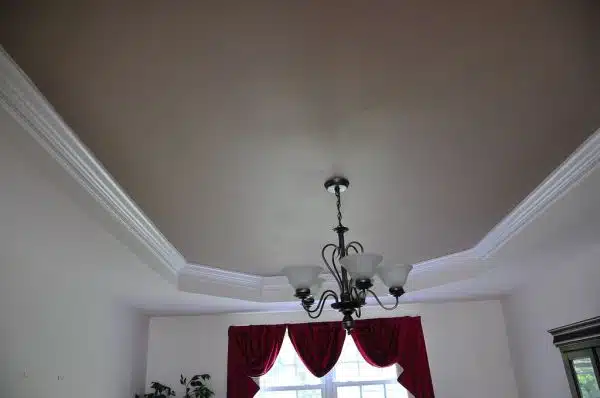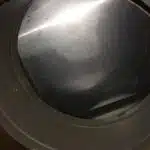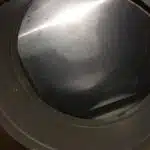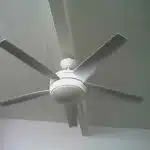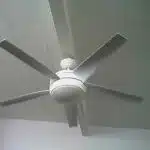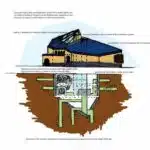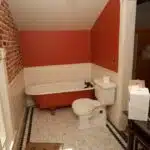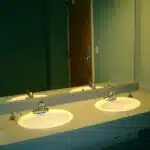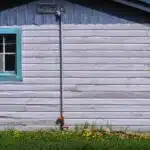Mold growth on bathroom ceilings is a common problem that many homeowners encounter. It not only looks unsightly, but it can also pose a health hazard if left untreated. Mold spores can cause respiratory problems and aggravate allergies. Therefore, it is crucial to remove mold from bathroom ceilings as soon as possible.
As a mold remediation specialist, I have seen the detrimental effects of mold growth in bathrooms firsthand. In this article, I will provide you with step-by-step instructions on how to remove mold from bathroom ceilings safely and effectively. By following these guidelines, you can ensure that your bathroom remains clean, healthy, and free of mold for years to come.
Identifying The Type Of Mold
As a mold remediation specialist, identifying the type of mold present in a bathroom is crucial to effectively removing it. Mold can be classified into three groups: allergenic, pathogenic, and toxigenic. Allergenic molds typically cause allergic reactions such as sneezing, coughing, and runny nose in those who are sensitive to them. Pathogenic molds can cause infections in individuals with weakened immune systems or pre-existing lung conditions. Toxigenic molds produce mycotoxins that can cause serious health effects such as neurological damage, cancer, and even death.
It’s important to note that exposure to mold can also have potential health effects on individuals regardless of the type present. Prolonged exposure to mold spores can lead to respiratory issues such as wheezing and difficulty breathing, as well as skin irritation and eye irritation. Those with allergies or asthma may experience increased symptoms when exposed to mold.
In order to properly remove mold from a bathroom ceiling, it’s essential to first identify the type present and understand the potential health effects of exposure. This will not only ensure effective removal but also protect the individuals involved from any potential harm caused by the mold.
Understanding The Health Risks Of Mold
Mold is a type of fungus that typically thrives in warm and damp environments, and can be found on walls and ceilings in bathrooms. Different types of mold can have varying effects on health, ranging from mild allergic reactions to more severe respiratory infections. It is important to not only identify the type of mold present, but also to properly remove it in order to minimize any health risks. Professional mold remediation is the most effective method to remove mold from bathroom ceilings.
Types Of Mold
As a mold remediation specialist, it is crucial to educate our clients about the different types of mold that exist. Understanding the differences in mold can help you take appropriate measures to prevent their growth and protect your health. Differentiating mold is essential because not all molds are harmful. Some molds are beneficial, while others can cause severe health problems. The most common types of mold found in homes are Cladosporium, Penicillium, Aspergillus, and Stachybotrys.
Cladosporium is typically found on surfaces such as carpets and fabrics. It grows in both cool and warm environments and has a powdery appearance. Penicillium is commonly found on food items such as cheese, fruits, and bread. This type of mold can also grow on walls and ceilings if there is excess moisture present. Aspergillus is one of the most dangerous molds that can cause allergic reactions, respiratory issues, and even lung infections. Lastly, Stachybotrys or black mold thrive in areas with high humidity levels like bathrooms or kitchens.
Prevention methods play a vital role in keeping these molds at bay. Regularly cleaning surfaces with bleach or vinegar solutions can eliminate any visible signs of mold growth. Proper ventilation systems should be installed to reduce moisture build-up in bathrooms or kitchens where water usage is high. Maintaining adequate indoor humidity levels between 30% to 50% prevents the growth of dangerous molds like Stachybotrys.
In conclusion, understanding the different types of molds that exist helps homeowners take appropriate preventive measures to avoid their growth and protect their health from hazardous molds like Stachybotrys or Aspergillus. Adopting proper hygiene habits such as regular cleaning and maintaining adequate indoor humidity levels go a long way in preventing any potential health risks due to mold infestation.
Health Effects Of Mold
Understanding the health risks of mold is crucial for homeowners and mold remediation specialists alike. Mold infestation can cause a variety of health problems, including allergies, respiratory issues, and infections. Exposure to molds like Stachybotrys or Aspergillus can lead to severe health consequences, such as lung damage and even death. Therefore, it’s essential to know about the potential health effects of mold exposure.
Preventing mold growth is the most effective way to reduce its harmful impact on human health. Mold prevention involves maintaining adequate indoor air quality by controlling humidity levels and keeping surfaces clean and dry. Proper ventilation systems should be installed in bathrooms or kitchens where water usage is high to prevent moisture buildup. Regular inspections of plumbing systems and fixing any leaks in pipes or roofs are also essential steps in preventing mold growth.
In conclusion, understanding the potential health risks of mold exposure highlights the importance of taking necessary preventive measures to avoid their growth. Taking proactive steps towards maintaining good indoor air quality by controlling humidity levels, regular cleaning, and fixing leaks go a long way in preventing any possible health risks due to mold infestation. As responsible homeowners or mold remediation specialists, we must prioritize ensuring a safe living environment free from hazardous molds that could harm our health.
Gathering The Right Tools And Materials
As we have discussed earlier, mold can pose serious health risks if not addressed promptly. It’s crucial to take the necessary precautions when removing it from bathroom ceilings. Here are some tips on how to effectively remove mold and prevent it from spreading.
Choosing cleaning products that are specifically designed for mold removal is essential. These products contain chemicals that break down the mold and eliminate its spores, preventing future growth. Always read the label carefully before making a purchase, and follow the instructions for use.
Safety precautions during mold removal cannot be overstated. Wearing protective gear such as gloves, goggles, and a face mask is important to prevent inhalation of spores or contact with skin. Ensure proper ventilation in the bathroom by opening windows or using a fan during the removal process. Remember to dispose of any contaminated materials properly to prevent further spread of mold.
To prepare the work area for mold removal, start by covering all surfaces with plastic sheets or drop cloths to protect them from any cleaning solutions or debris that may fall during the process. Turn off any electrical sources in the bathroom as a safety measure. Finally, make sure you have all necessary tools and equipment at hand before starting the removal process. By following these recommendations, you can ensure safe and effective mold removal from your bathroom ceiling.
Preparing The Work Area
Before beginning the mold removal process in your bathroom, it is essential to prepare the work area. This involves taking a few safety precautions and gathering the necessary cleaning supplies. Firstly, ensure that you have adequate ventilation in the room to prevent inhaling mold spores or cleaning chemicals. You can achieve this by opening windows or using fans to circulate fresh air into the bathroom.
Next, cover any surrounding areas with plastic sheeting or drop cloths to protect them from any potential splatters or spills during the cleaning process. This will also help contain any contaminated materials and reduce cross-contamination of other areas in your home. Be sure to tape down the edges of the covering securely to prevent them from moving around or slipping.
Finally, dispose of all contaminated materials properly. This includes any materials used during the cleaning process such as rags, sponges, and brushes. It is essential to seal these items in plastic bags before disposing of them in a sealed trash can outside your home. Taking these steps will help ensure that you remove mold safely and effectively without causing harm to yourself or others.
As you prepare for mold removal, it is critical that you wear protective gear such as gloves, goggles, and a respirator mask to safeguard yourself from exposure to harmful substances during the remediation process. In addition, wearing appropriate clothing such as long-sleeved shirts and pants can help minimize skin contact with mold particles. Following these guidelines will ensure that you stay safe while removing mold from your bathroom ceiling.
Wearing Protective Gear
Metaphorically speaking, entering a mold-infested bathroom without wearing protective gear is akin to jumping into a pool filled with hungry piranhas. It can have disastrous consequences for your health. Therefore, it is crucial to choose appropriate gear before starting the remediation process.
Choosing the right equipment depends on the extent of the mold growth and its location. For instance, if it is a small patch on the ceiling, gloves and goggles would suffice. However, if it covers a larger area or has spread to other parts of the house, you may need respiratory protection like an N95 mask or a half-face respirator. Additionally, wearing disposable coveralls or old clothes that can be thrown away after use is recommended.
Mold remediation involves significant risks as exposure to spores can cause allergic reactions, respiratory issues, and other health problems. Therefore, protecting yourself from potential hazards associated with mold is vital. Choosing appropriate gear such as gloves, goggles, masks, and coveralls can minimize your exposure to hazardous materials and protect your overall health.
- Wear gloves made of nitrile or rubber to avoid skin contact with mold.
- Use safety goggles or glasses that fit snugly around your eyes.
- Select an N95 respirator mask that filters out at least 95% of airborne particles.
- Choose disposable coveralls made of breathable fabric that protects against dust and dirt.
- Wear old shoes or shoe covers in areas where there is visible mold growth.
Moving onto the next step in removing mold from bathroom ceilings requires ventilating the room properly.
Ventilating The Room
- Increasing air flow in a room can be an effective way to reduce mold growth on bathroom ceilings.
- The use of ventilation systems, such as bathroom fans and air exchange systems, can help to remove moisture from the air and reduce humidity levels.
- Ensuring that windows and other openings are not blocked can also improve air flow and reduce the chance of mold growth.
- Ventilation systems should be designed and installed according to local codes and standards to ensure they are effective in preventing mold growth.
Improving Air Flow
Improving ventilation is a crucial step in preventing mold growth in bathrooms. Proper air circulation will ensure that excess moisture does not accumulate, which is the primary cause of mold growth. Installing exhaust fans is one effective way to improve ventilation and prevent mold from forming on bathroom ceilings.
Exhaust fans work by removing humid air from the room, thereby improving air flow and reducing moisture levels. When installing an exhaust fan, it is important to ensure that it is appropriately sized for the room’s dimensions. For example, a small bathroom may only require a 50 CFM (cubic feet per minute) fan, while a larger bathroom may require a fan with a higher CFM rating. In addition to properly sizing the fan, it should also be vented outside the home rather than into an attic or crawl space.
In conclusion, improving ventilation through installing exhaust fans can help prevent mold growth on bathroom ceilings. By ensuring proper air flow and reducing moisture levels, homeowners can take proactive steps to safeguard their health and wellbeing. As mold remediation specialists, we recommend that all homeowners consider installing exhaust fans as part of their overall mold prevention strategy.
Ventilation Systems
Proper ventilation is essential in preventing mold growth in any room, including bathrooms. In addition to exhaust fans, homeowners can also consider installing a ventilation system that circulates fresh air throughout the space. Such systems are particularly effective in large bathrooms or those with limited access to natural ventilation.
A ventilation system works by removing stale and humid air from the bathroom and replacing it with fresh outdoor air. These systems can be installed either as standalone units or as part of existing heating, ventilation, and air conditioning (HVAC) systems. By improving air flow and reducing moisture levels, homeowners can effectively eliminate conditions that promote mold growth.
In addition to improving ventilation, homeowners should also implement moisture control strategies such as fixing leaks promptly and wiping down surfaces after use. By taking proactive steps towards mold prevention, homeowners can safeguard their homes against potentially dangerous mold infestations while ensuring their families’ health and wellbeing.
Removing Visible Mold
After identifying visible mold on your bathroom ceiling, it’s important to take immediate action to remove it. Using natural remedies such as vinegar, baking soda, and hydrogen peroxide can effectively eliminate the mold. Simply mix these ingredients with water and spray onto the affected area, let it sit for a few minutes before scrubbing with a brush or sponge. Rinse thoroughly and dry completely.
Preventing mold recurrence is essential after removing visible mold. Ensure proper ventilation in your bathroom by using exhaust fans or opening windows during and after showering. Fix any leaks or water damage promptly to prevent moisture buildup. Regularly cleaning your bathroom with an antimicrobial solution can also help prevent mold growth.
Incorporating these steps into your routine can help maintain a mold-free bathroom. However, if you suspect hidden mold behind walls or ceilings, it’s important to seek professional assistance. Treating hidden mold requires specialized equipment and expertise to ensure complete removal and prevent further contamination.
Treating Hidden Mold
Removing visible mold is only the first step in addressing a mold problem in your bathroom. Often, hidden mold can be lurking behind walls or above ceilings, leading to further damage and health concerns if left untreated. Treating hidden mold requires a more comprehensive approach that involves identifying the source of the moisture that is causing it to grow and implementing preventative measures to avoid future outbreaks.
Mold prevention should be a top priority for every homeowner. The best way to prevent mold from growing in your bathroom is to keep it dry and well-ventilated. This means fixing any leaks promptly, wiping down surfaces after use, and running an exhaust fan during and after showers. Regular cleaning with a mildew-resistant cleaner can also help prevent mold growth.
DIY mold testing kits are available for purchase at most home improvement stores. While these kits can give you an idea of whether or not you have a mold problem, they are not always accurate and do not provide information on how severe the issue may be. If you suspect that you have hidden mold in your bathroom, it is best to consult with a professional who can conduct a thorough inspection using specialized equipment.
Cleaning and disinfecting the area where visible or hidden mold was present is crucial in preventing future outbreaks. It is important to use appropriate personal protective equipment when handling mold, such as gloves and masks, as exposure can lead to respiratory issues and other health problems. Following proper cleaning techniques with approved disinfectants will ensure that any remaining spores are eliminated, reducing the risk of regrowth.
Cleaning And Disinfecting The Area
To effectively clean and disinfect a bathroom ceiling with mold, it is important to take the necessary precautions to minimize exposure to mold spores. Begin by wearing personal protective equipment such as gloves, goggles, and a respirator mask. Before cleaning, ensure that the room is well-ventilated and avoid using fans that may spread mold spores around.
To clean the affected area, use a solution of water and detergent or vinegar. Avoid using bleach as it can be harmful when mixed with other chemicals commonly found in bathrooms. Use a soft-bristled brush or sponge to scrub the mold off the ceiling. Once done, rinse thoroughly with water and allow the area to dry completely.
Preventing reoccurrence of mold growth on bathroom ceilings requires addressing any underlying issues such as high humidity levels or leaks. Proper ventilation can help reduce moisture in the bathroom while fixing any leaks promptly can prevent water from accumulating on ceilings. It is also important to avoid common mistakes such as painting over mold without addressing its root cause first.
Transition: After thoroughly cleaning and disinfecting the affected area, it is crucial to dry the ceiling completely before moving on to any repairs or repainting.
Drying The Ceiling Completely
- Utilizing a fan to dry the bathroom ceiling can be an effective approach when removing mold; however, the fan should be positioned in such a way that it does not introduce additional moisture into the area.
- Utilizing a dehumidifier can aid in drying the ceiling and removing the mold, however maintenance of the dehumidifier is necessary to ensure proper functioning.
- Proper ventilation of the bathroom is critical to ensure that the area remains dry and the mold does not return.
- Air circulation is also an important factor in drying the ceiling and removing the mold, as it helps to circulate the air and remove any moisture from the area.
Using A Fan
One of the most effective ways to dry a bathroom ceiling after removing mold is to use a fan. It is important to choose the right fan for this task, as using an inadequate or inappropriate one may not yield the desired results. The benefits of using a fan include its ability to increase air circulation and reduce moisture levels, which are essential in preventing mold growth.
When choosing a fan for drying the bathroom ceiling, it is important to consider factors such as size, speed, and noise level. A larger fan with multiple speed settings will provide better air circulation and faster drying times. It is also advisable to choose a fan that operates quietly so as not to disturb household activities. Additionally, it is important to ensure that the fan is positioned correctly for maximum effectiveness, such as pointing it towards the area that requires drying.
Tips for using a fan effectively include keeping it on continuously until the ceiling is completely dry. This may take several hours or even days depending on the severity of the mold damage and moisture levels. It is also advisable to keep windows and doors open during this process to allow for better ventilation and air circulation. Furthermore, it is important to regularly check the progress of drying by touching the affected area with your hand or using a moisture meter. This will help you determine whether additional steps need to be taken before repainting or sealing off the ceiling.
In conclusion, using a fan can be an effective way of drying bathroom ceilings after mold remediation. By choosing the right type of fan and following tips for effective use, homeowners can ensure that their bathrooms remain mold-free and safe for use.
Dehumidifier
After using a fan to dry the bathroom ceiling, it is essential to ensure that the area is completely dry before repainting or sealing off the ceiling. This is because residual moisture can lead to mold growth and subsequent damage to the structure of your home. One effective way to achieve complete drying is by using a dehumidifier.
The benefits of using a dehumidifier include its ability to remove excess moisture from the air, which reduces humidity levels and prevents mold growth. When choosing a dehumidifier, factors such as room size and capacity should be considered to ensure maximum effectiveness. A larger dehumidifier with higher capacity will be more efficient in removing moisture from the air.
It is important to choose the right dehumidifier for your specific needs, such as one with automatic settings or built-in humidistat for easy monitoring and control. Additionally, regular maintenance and cleaning of the unit are necessary to ensure optimal performance. By using a combination of a fan and dehumidifier, homeowners can effectively dry their bathroom ceilings after mold remediation and prevent future mold growth.
Applying A Mold-Resistant Coating
Applying a Mold-Resistant Coating can be an effective way to prevent future mold growth and protect your bathroom ceiling from moisture. There are various benefits of coating, including increased durability and easier cleaning. Choosing the right product is crucial to ensure that the coating will effectively prevent mold growth.
One of the main benefits of coating is that it provides a barrier between moisture and the surface of your bathroom ceiling. This barrier prevents water from seeping into cracks and crevices, where mold can thrive. Additionally, mold-resistant coatings are often more durable than traditional paint, making them less likely to crack or peel over time. This means that you won’t have to worry about reapplying the coating as frequently as you would with regular paint.
When choosing a mold-resistant coating, it’s important to look for products that contain fungicides or other anti-microbial agents. These ingredients actively work to kill any existing mold spores on the surface before they can grow into a larger problem. It’s also important to consider the finish of the product – a glossy finish may be more resistant to moisture and easier to clean than a matte finish.
By applying a mold-resistant coating to your bathroom ceiling, you can take proactive steps towards preventing future mold growth in your home. However, it’s important to remember that there are other preventative measures that should be taken as well. In the next section, we’ll discuss additional steps you can take to keep your bathroom free from harmful mold spores.
Preventing Future Mold Growth
- Identifying moisture sources and properly ventilating the bathroom are essential to preventing future mold growth.
- Improving airflow, controlling humidity, and sealing any leaks can help keep the bathroom dry and reduce the likelihood of mold growth.
- Cleaning and sanitizing affected areas, repairing any damage, and conducting regular inspections can help to identify and address potential issues before they become a problem.
- Taking proactive steps to minimize moisture and humidity in the bathroom will help to ensure mold does not return in the future.
Identifying Moisture Sources
Identifying Moisture Sources is crucial in preventing future mold growth in bathroom ceilings. Common moisture sources include leaks from pipes and fixtures, inadequate ventilation, and excess condensation. It is important to identify the source of moisture as soon as possible to prevent further damage and mold growth.
Prevention techniques start with regular maintenance checks for any signs of leaks or water damage. Proper ventilation should be installed to reduce humidity levels in the bathroom. This can be achieved through the use of exhaust fans or opening windows after showering. Additionally, using a dehumidifier can help control moisture levels in the room.
A mold remediation specialist understands that prevention is key when it comes to mold growth in bathroom ceilings. Identifying common moisture sources and implementing prevention techniques can save homeowners time and money in the long run. By staying proactive and vigilant, homeowners can keep their bathrooms free from harmful mold growth.
Proper Ventilation
A critical aspect of preventing future mold growth in bathroom ceilings is proper ventilation. Maximizing ventilation in the bathroom can help reduce humidity levels and prevent moisture buildup. This can be achieved by choosing the right exhaust fan for your bathroom size and usage frequency. Exhaust fans are designed to remove excess moisture from the room, reducing the risk of mold growth.
Choosing the right exhaust fan for your bathroom is essential in maximizing ventilation. You should consider factors such as bathroom size, ceiling height, and usage frequency when selecting an exhaust fan. A mold remediation specialist can help you choose the appropriate exhaust fan that will effectively remove moisture from your bathroom. Additionally, it’s important to ensure that your chosen exhaust fan meets local building code requirements.
Proper ventilation is a proactive approach to preventing future mold growth in your bathroom ceiling. By maximizing ventilation through appropriate use of an exhaust fan or opening windows after showering, homeowners can reduce humidity levels and minimize moisture buildup. Ultimately, implementing proper ventilation techniques can save homeowners time and money by avoiding costly repairs due to harmful mold growth.
Regular Maintenance And Inspection
Metaphorically speaking, regular maintenance is like brushing your teeth – a small but effective habit that prevents bigger problems in the future. In the case of mold prevention, regular maintenance and inspection techniques are key to avoiding a costly and dangerous infestation.
Regular maintenance should include checking for any leaks or water damage, as moisture is one of the primary causes of mold growth. Keep an eye out for any discoloration or warping on surfaces such as walls, ceilings, and floors. Additionally, proper ventilation is crucial in preventing mold growth. Ensure that your bathroom has adequate ventilation and consider using a dehumidifier if necessary.
Inspection techniques involve looking for signs of mold growth such as visible spores, musty odors, or suspicious staining. It’s important to check not only visible surfaces but also areas such as behind tiles and in wall cavities. Regularly cleaning your bathroom with anti-fungal products can also help prevent mold growth before it begins.
Transition: While regular maintenance and inspections can greatly reduce the likelihood of a mold problem in your bathroom, sometimes professional help may be needed.
Seeking Professional Help
Hiring professionals for mold remediation is crucial for effectively and safely removing mold from bathroom ceilings. While DIY methods may seem like a cheaper alternative, they often do not address the root cause of the mold growth and can even make the situation worse. Professional services have the expertise and equipment necessary to properly identify and remove mold, as well as prevent future growth.
One of the biggest advantages of hiring professionals is their ability to ensure safety during the remediation process. Mold spores can be hazardous to one’s health, especially if inhaled or ingested. Professionals are trained in proper containment and disposal methods to minimize exposure to these spores. They also have access to protective gear such as masks, gloves, and suits that are specifically designed for mold remediation.
In addition to safety, professional services also provide peace of mind knowing that the job is being done correctly and in compliance with regulations. Mold remediation specialists follow industry standards set by organizations such as the Environmental Protection Agency (EPA) and Occupational Safety and Health Administration (OSHA). They use approved chemicals and techniques that are effective in removing mold without causing harm to individuals or the environment.
Transitioning into ensuring safety and compliance in mold remediation, it is important to understand that these steps go hand-in-hand with hiring professionals. By entrusting a reputable company with experience in mold remediation, individuals can rest assured that their home or business will be free from harmful molds while remaining compliant with regulations set forth by governing bodies.
Ensuring Safety And Compliance
After seeking professional help, the next step in removing mold from bathroom ceilings is ensuring safety and compliance. Safety precautions should be taken seriously to minimize the risk of exposure to harmful chemicals and spores. Compliance standards set by regulatory bodies must also be followed to avoid potential legal and health issues.
For instance, let’s say a homeowner noticed black spots on their bathroom ceiling due to poor ventilation. They decided to remove the mold themselves using bleach without proper protective gear or following compliance standards. This led to respiratory problems for the homeowner and possible legal action due to improper disposal of contaminated materials.
To prevent such scenarios, it is crucial to wear appropriate protective gear such as gloves, goggles, and respirators when handling mold remediation chemicals. Additionally, proper containment methods should be used during removal to prevent cross-contamination of other areas within the building. Compliance standards set by regulatory bodies such as OSHA should also be followed strictly.
Overall, safety precautions and compliance standards are essential when removing mold from bathroom ceilings. Neglecting these measures can lead to serious health hazards for individuals involved in the process and possible legal consequences for not following regulatory guidelines. Therefore it’s important always to prioritize safety first when dealing with mold remediation.
Conclusion
As a mold remediation specialist, I understand the importance of maintaining a clean and healthy bathroom. Mold can be detrimental to both your health and your home’s structure. By identifying the type of mold and understanding its health risks, you can take steps to remove it from your bathroom ceiling.
Gathering the right tools and materials, preparing the work area, wearing protective gear, and preventing future mold growth are essential steps in removing mold from your bathroom ceiling. Regular maintenance and inspection are also crucial in ensuring that mold does not return. However, if the problem persists or if you feel uncomfortable handling it yourself, seeking professional help is always an option.
Remember to ensure safety and compliance throughout the process. Taking these steps will not only remove the mold but also provide you with a clean and healthy environment for years to come. As a specialist in mold remediation, I encourage you to take action as soon as possible to protect your health and home.
Image Credits
- “tray ceiling with crown molding” by The Finishing Company Richmond Va (featured)

